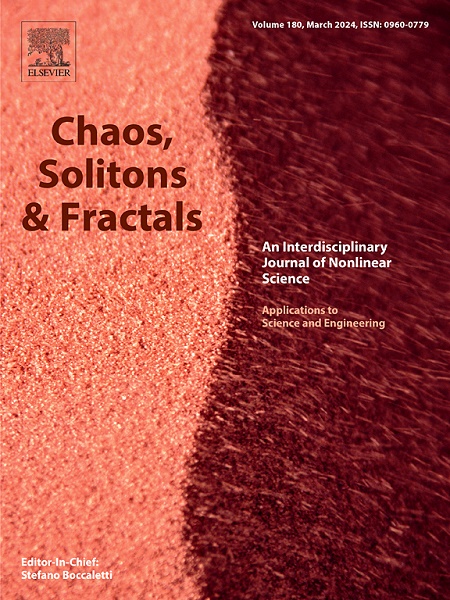A universal re-annealing method for enhancing endurance in hafnia ferroelectric memories: Insights from stochastic noise analysis
IF 5.3
1区 数学
Q1 MATHEMATICS, INTERDISCIPLINARY APPLICATIONS
引用次数: 0
Abstract
Ferroelectric memories based on hafnium oxide (HfO₂) are promising for next-generation non-volatile memory due to their compatibility with complementary metal-oxide semiconductor (CMOS) processes and scalability to nanometer-thin films. However, cycling endurance remains a critical challenge, largely limited by defect generation and ferroelectric fatigue. In this work, we demonstrate a universal re-annealing process that significantly enhances the endurance of ferroelectric HfO2 memory devices. By employing stochastic noise analysis, specifically low-frequency noise (LFN) spectroscopy, as a diagnostic tool, we uncover the microscopic mechanisms by which thermal re-annealing mitigates degradation. This stochastic diagnostic approach serves as a crucial technique for process optimization, turning the inherent randomness of defect generation into actionable insights. The re-annealing treatment, optimized at 600 °C, effectively repairs ferroelectric thin films, reducing trap densities and improving ferroelectric phase stability without inducing the adverse effects encountered at higher annealing temperatures. This optimization was guided by noise measurements that sensitively detect trap-related fluctuations, revealing how an overly aggressive anneal at 800 °C introduces new defects, eventually degrading device performance. The effectiveness of this approach is validated across standalone ferroelectric films and integrated devices (ferroelectric tunnel junctions), highlighting its broad applicability.
提高铪铁电存储器耐久性的通用再退火方法:来自随机噪声分析的见解
基于氧化铪(HfO₂)的铁电存储器由于其与互补金属氧化物半导体(CMOS)工艺的兼容性以及纳米薄膜的可扩展性,因此有望成为下一代非易失性存储器。然而,循环耐力仍然是一个关键的挑战,很大程度上受到缺陷产生和铁电疲劳的限制。在这项工作中,我们展示了一种通用的再退火工艺,可以显着提高铁电HfO2存储器件的耐用性。通过采用随机噪声分析,特别是低频噪声(LFN)光谱作为诊断工具,我们揭示了热再退火减轻降解的微观机制。这种随机诊断方法是过程优化的关键技术,将缺陷产生的固有随机性转化为可操作的见解。在600°C下优化的再退火处理,有效地修复了铁电薄膜,降低了陷阱密度,提高了铁电相稳定性,而不会引起在更高退火温度下遇到的不利影响。这种优化是由噪声测量指导的,该测量灵敏地检测到陷阱相关的波动,揭示了800°C下过度激进的退火如何引入新的缺陷,最终降低了设备的性能。这种方法的有效性在独立铁电薄膜和集成器件(铁电隧道结)上得到了验证,突出了其广泛的适用性。
本文章由计算机程序翻译,如有差异,请以英文原文为准。
求助全文
约1分钟内获得全文
求助全文
来源期刊

Chaos Solitons & Fractals
物理-数学跨学科应用
CiteScore
13.20
自引率
10.30%
发文量
1087
审稿时长
9 months
期刊介绍:
Chaos, Solitons & Fractals strives to establish itself as a premier journal in the interdisciplinary realm of Nonlinear Science, Non-equilibrium, and Complex Phenomena. It welcomes submissions covering a broad spectrum of topics within this field, including dynamics, non-equilibrium processes in physics, chemistry, and geophysics, complex matter and networks, mathematical models, computational biology, applications to quantum and mesoscopic phenomena, fluctuations and random processes, self-organization, and social phenomena.
 求助内容:
求助内容: 应助结果提醒方式:
应助结果提醒方式:


